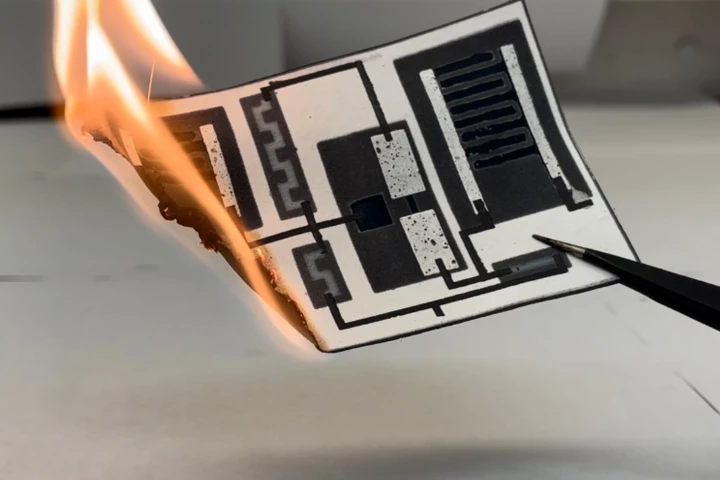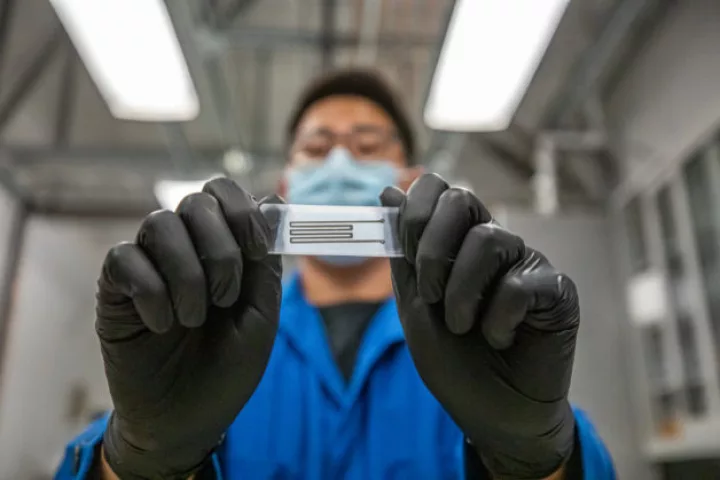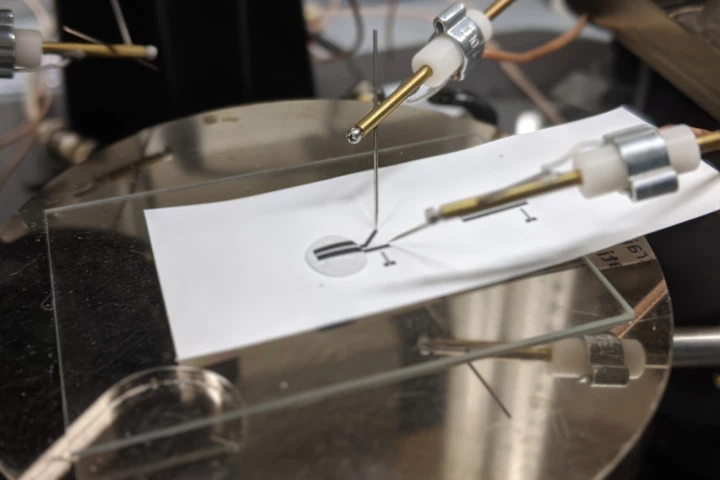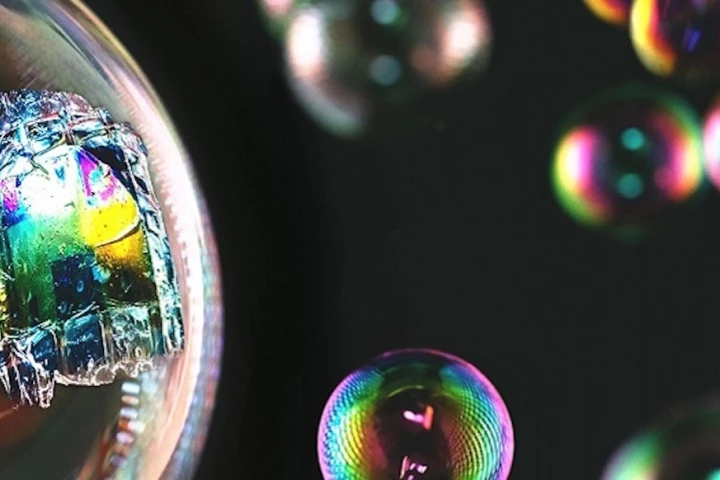Printable Electronics
-
While the field of printable electronics holds much promise, the printing of circuits onto curved surfaces is still very challenging. A new technique simplifies the process of doing so, potentially allowing for new types of electronic devices.
-
Single-use electronics pose a challenge, as the toxic materials in them shouldn't be released into the environment, yet those substances are hard to reclaim. Scientists have developed what could be a solution, in the form of a paper circuit board.
-
Old electronics are tricky to recycle, meaning they clog up landfills while locking valuable metals away. Now scientists have demonstrated printed circuits that can be degraded on demand, returning their materials to reusable forms.
-
Anyone who uses a smartphone will be familiar with NFC technology, which is used for such things as contactless payments. To demonstrate the versatility of the technology when combined with printed circuitry, Prelonic has created the Paper Piano.
-
Eyeing solutions to our e-waste problem, engineers have developed the world's first fully recyclable printed electronics, demonstrated in a transistor that can be reduced to its original building blocks with the help of baths and sound waves.
-
New ultrathin solar cells boast a few advantages over others of their type. They're more efficient, made using more common elements, and can be inkjet-printed onto surfaces, making them light and flexible enough to power wearable electronics.
-
Tattoos could soon have more practical uses. A team of researchers from Waseda University in Japan has developed a simple new method to manufacture electronic tattoos, printing the conductive “wiring” with a basic inkjet printer and joining components without the need for solder.
-
Stretchable electronics that could be integrated into clothing are usually expensive to produce. But researchers at Michigan State University have used a plain old inkjet printer to make stretchy circuits that could form the basis of smart fabrics, deformable tablets and electronic wallpaper.
-
Researchers at MIT have invented a printing process that could turn a lot of potential breakthroughs, such as electricity-generating clothing and smart sutures, into an inexpensive reality.
-
Researchers from the Young Investigator Network at Karlsruhe Institute for Technology (KIT) in Germany are developing printed electronics from natural and compostable materials that could help make a dent in the millions of tons of electronic waste piling up worldwide each year.
-
Someday soon, your milk carton may be able to tell you that the milk has spoiled. This could be made possible by a new technique developed at Singapore's Nanyang Technological University, which allows disposable electronics to be printed on a variety of surfaces, using an existing T-shirt printer.
-
Researchers at Georgia Tech have developed a new technique to print advanced, ink-based electrical circuitry on a desktop printer. The technique can produce flexible electrodes in 60 seconds with equipment and materials that cost less than US$300.
Load More











